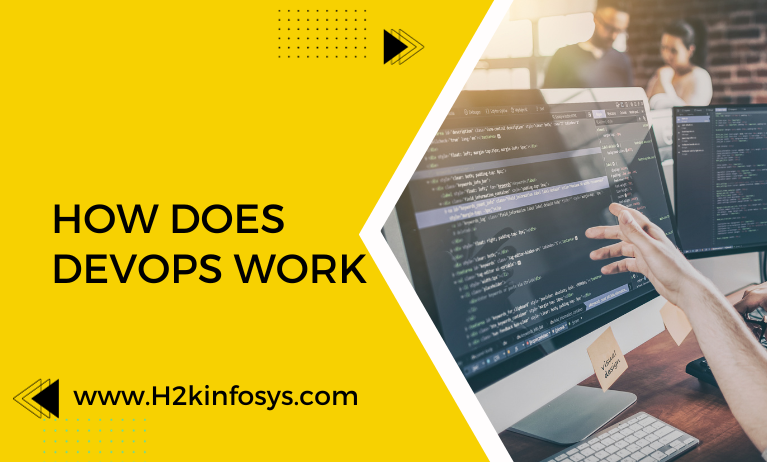Using numerous automation tools, the DevOps process for software development enhances communication between development and operations teams. The many steps of the DevOps Lifecycle are used to implement these automation techniques.
DevOps is another approach designed to enhance productivity throughout the entire software development lifecycle. A DevOps process can be seen as an endless cycle that includes the following steps: plan, code, build, test, release, deploy, operate, monitor, and through feedback, plan, which resets the loop. To learn more about DevOps, check out the online DevOps training.
DevOps implies that an IT team creates software that fully satisfies user requirements, installs quickly, and performs well right away. To do this, organisations use a mix of culture and technology.
Developers and stakeholders discuss the project and collaborate on incremental upgrades that go live independently of one another in order to align software to expectations.
IT teams move code automatically from one stage of development and deployment to another using CI/CD pipelines and other automation techniques to reduce wait times. Teams can implement regulations to make sure that releases adhere to standards and instantly review changes.
Software can be written quickly and easily, but making it operate is another matter. DevOps proponents employ containers or other techniques to ensure the program behaves consistently from development through testing and into production in order to release good code. They implement modifications one at a time so that issues may be tracked. For consistent hosting and deployment environments, teams rely on configuration management. Code modifications are frequently made in response to issues they find during live operations, frequently following a transparent post-mortem analysis and regular feedback loops.
Developers may provide support for the running software, therefore it is their responsibility to address runtime issues. In the software design meetings, IT operations managers could be present and provide advice on how to use resources effectively and safely. To blameless post-mortems, anyone may contribute. These experts can promote a DevOps culture more effectively if they cooperate and share their abilities more.
Goal of DevOps
DevOps aims to accelerate an organisation’s ability to deploy apps and services. Many businesses, including Amazon, Netflix, and others, have effectively utilised DevOps to improve their customer experience.
Example:
An illustration of this is Facebook’s mobile app, which is updated every two weeks and effectively tells users they can have whatever they desire. Ever wonder how Facebook was able to smooth out social interactions? The mindset aids Facebook in ensuring that apps aren’t out-of-date and that users have the greatest possible Facebook experience. Facebook implements this true code ownership model, which holds developers accountable for testing, supporting, producing, and delivering each kernel of code. They create and revise its actual policies in ways like this but Facebook has developed a culture and has successfully accelerated its development lifecycle.
By moving their strategies to weeks and months instead of years, industries have begun to prepare for the digital revolution while keeping high quality. DevOps is the solution to all of these issues.
How DevOps Works?
The SDLC life cycle is divided into the following stages by the DevOps Lifecycle:
1.Continuous Development
In this stage, the code is built/packaged into an executable file that can be sent to the QAs for testing and committed to version control tools like Git or SVN for tracking the various versions of the code. Other tools used during this stage include Ant, Maven, and Gradle.
2.Continuous Integration
This stage is crucial to the DevOps Lifecycle as a whole. Since it deals with merging the many DevOps lifecycle stages, it is essential to automate the entire DevOps Process.
3.Continuous Deployment
During this stage, the code is developed, the environment or application is containerized, and the server of choice is pushed. Configuration management, virtualization, and containerization are the crucial procedures in this phase.
4.Continuous Testing
This stage deals with testing the program that the developer has pushed through an automated process. When there is a problem, the notification is delivered back to the integration tool, which then alerts the developer. The message is forwarded to the integration tool, which sends the build to the production server if the test is successful.
5.Continuous Monitoring
The stage keeps an eye out for errors or crashes in the deployed application. It can be configured to gather user input. The data is subsequently forwarded to the programmers so they can enhance the application.
Conclusion You can learn more about how DevOps works by checking out the online DevOps certification course.





























